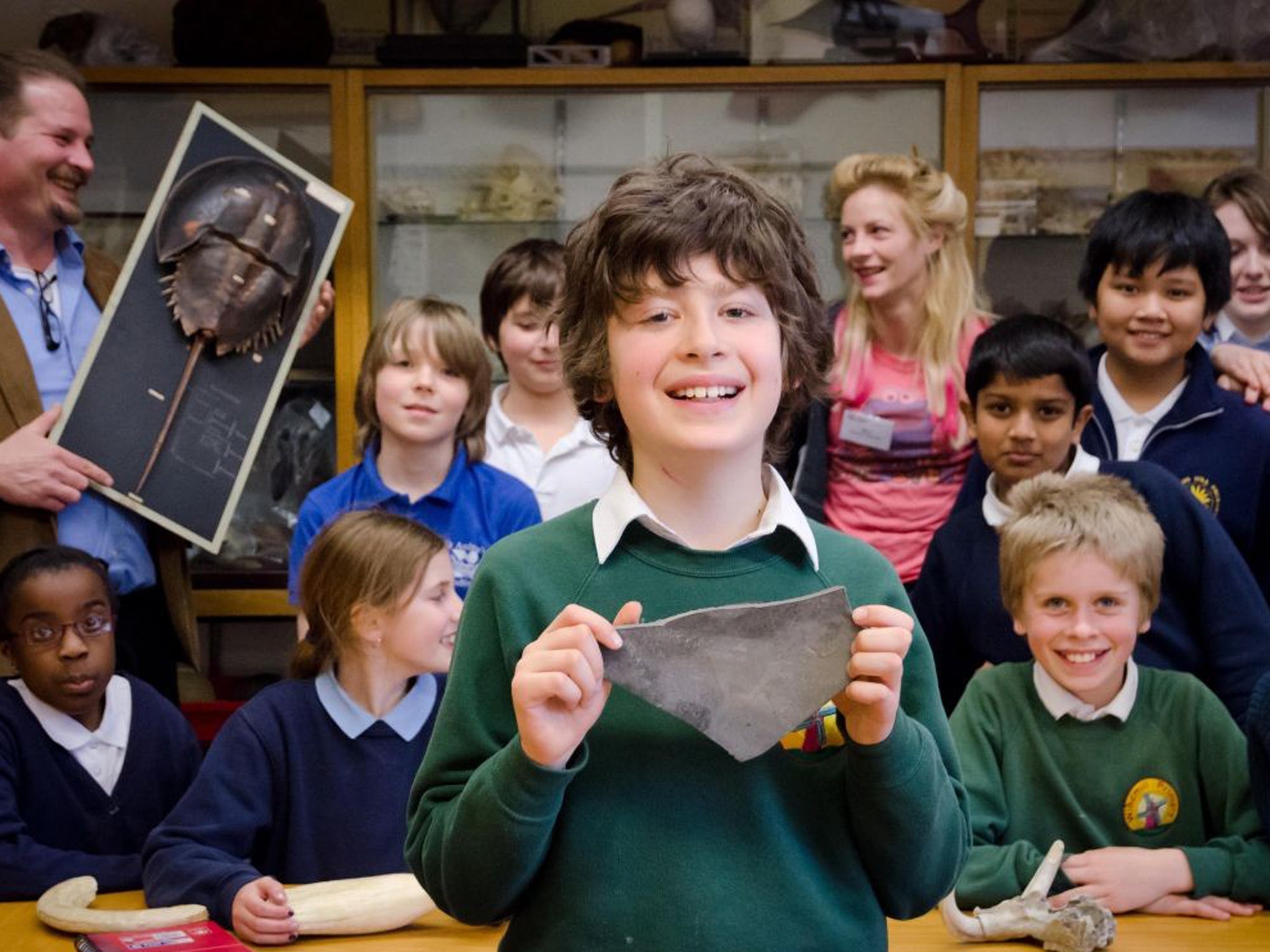Primary school pupil turns up to show and tell with 300m-year-old fossil

A youngster wowed his teachers when it emerged the piece of shale he brought with him to a show-and-tell was in fact a 300 million-year-old fossil.
Bruno Debattista was on holiday with his family in Cornwall last summer when he found the fossil.
However, when museum experts examined it, it turned out to be an ancient footprint of a horseshoe crab, which would have scuttled across a pre-historic landscape at a time when the super-continent Pangaea was being formed.
The 10-year-old pupil of Windmill Primary School in Oxford brought the artefact to an after-school club at Oxford University’s museum of Natural History, which encourages kids to develop a passion for the natural world, with the hope that one or two might just become geologists and zoologists of tomorrow.
Chris Jarvis, the education officer at the Museum, said: “Footprints of this age are incredibly rare and extremely hard to spot, so we were amazed when Bruno produced them at our After-School Club.”
“Still more impressive is the fact that Bruno had a hunch they might be some kind of footprints, even though the specimen had some of our world expert geologists arguing about it over their microscopes!”
The footprints are thought to have been made in the Carboniferous period, which occurred 308-327million years ago, by a pair of mating horseshoe crabs, one of the world’s oldest species.
Bruno has decided to bestow the fossil to the Museum, so it can be viewed by thousands of visitors every year.
Subscribe to Independent Premium to bookmark this article
Want to bookmark your favourite articles and stories to read or reference later? Start your Independent Premium subscription today.

Join our commenting forum
Join thought-provoking conversations, follow other Independent readers and see their replies